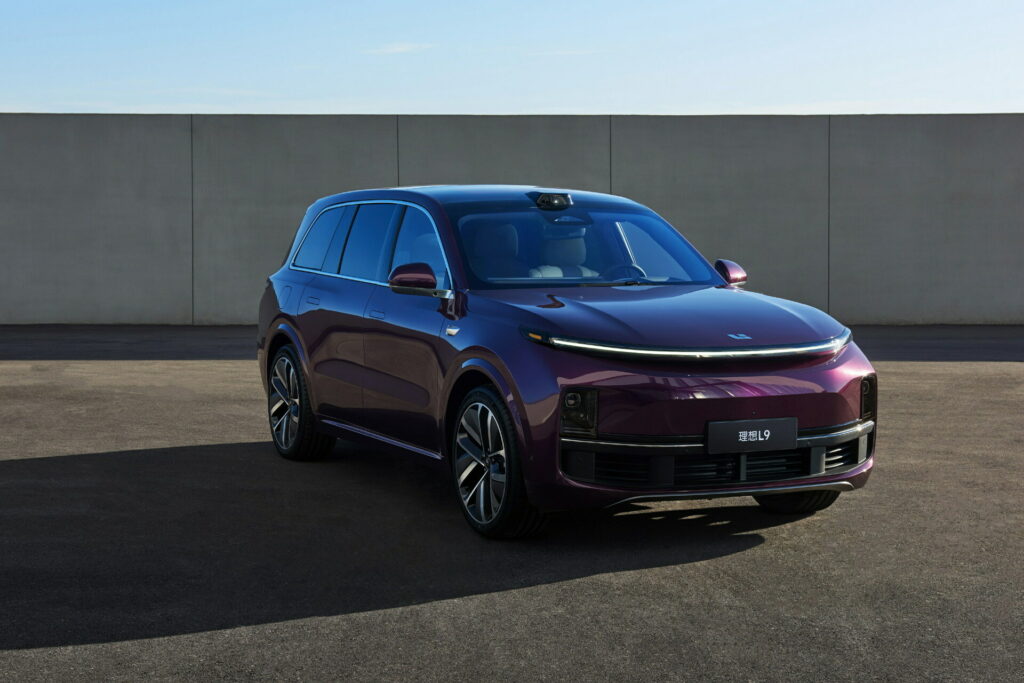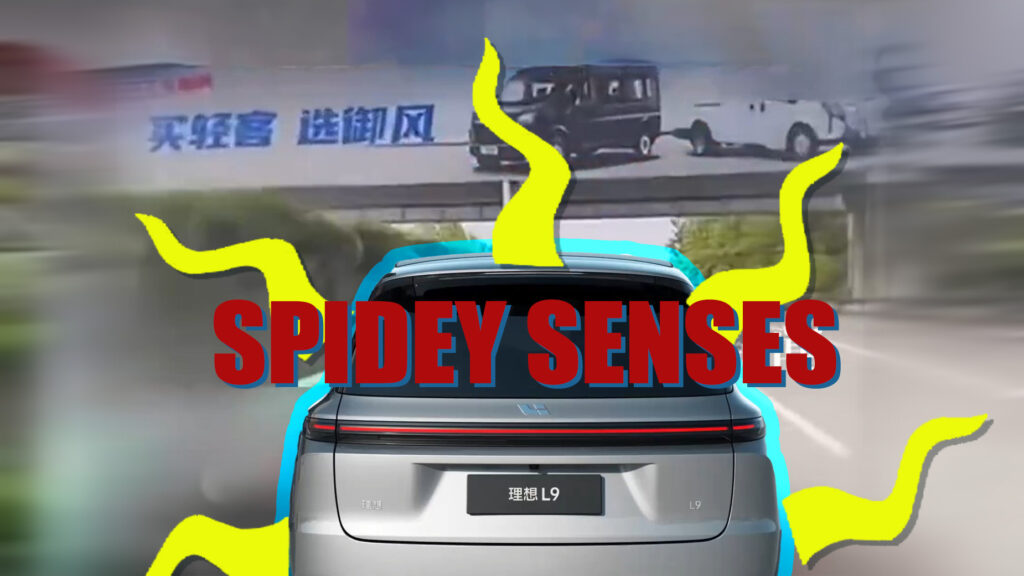- Li Auto acknowledged that the SUV’s systems thought the advertisement was an actual vehicle.
- This bizarre accident happened despite the Li Auto 9 having lidar, radar, ultrasonic sensors, and cameras.
- AEB systems still need to be improved across the car industry.
A Li Auto L9 on a Chinese expressway recently learned the hard way that its ‘safety systems’ have a blind spot the size of a billboard. The flagship SUV was rear-ended not because the driver slammed on the brakes, but because the onboard tech mistook a billboard advertising two vans (spread across the road) for actual vehicles.
The Li Auto L9 is equipped with a full array of driver assistance systems, including radar, ultrasonic sensors, cameras, and an advanced lidar mounted just above the windshield. While all the hardware is there, it appears that the Chinese carmaker’s engineers have their work cut out in refining the software to accurately distinguish between advertisements and actual vehicles.
Watch: The L9 SUV From Li Auto Proves That The Chinese Really Are On A Roll
The driver of the SUV says that after the L9 detected the billboard, the automatic emergency braking (AEB) system was triggered, slamming on the brakes and bringing it to a stop from 77 km/h (48 mph).
While the driver managed to narrowly avoid hitting the crash barrier on the side of the G70 Expressway, the SUV was rear-ended by another vehicle. It didn’t suffer too much damage and can likely be repaired with just a new bumper and a new tailgate.
‘Phantom braking’ events like these aren’t uncommon in vehicles with semi-autonomous driver-assistance systems, but this is the first time we’ve heard about a car getting confused by a billboard. The driver of the L9 reportedly demanded 20,000 yuan ($2,756) in compensation from Li Auto for the incident.
As reported by The Autopian, Li Auto issued a statement to Chinese media indicating that it had proposed offering the owner 4,000 yuan (~$550) in cash, but an agreement has not been finalized. Li Auto acknowledged that ‘the system mistakenly identified an advertisement image as a vehicle’ and stated that ‘improvements will be made to the software system.'”
While I haven’t driven the Li Auto L9, I have driven plenty of cars with AEB systems that freak out when another car is dedicated, such as when a parked car may be positioned around a turn you’re approaching. It’s an unnerving experience and shows that while systems like this are important, they are not perfect.




